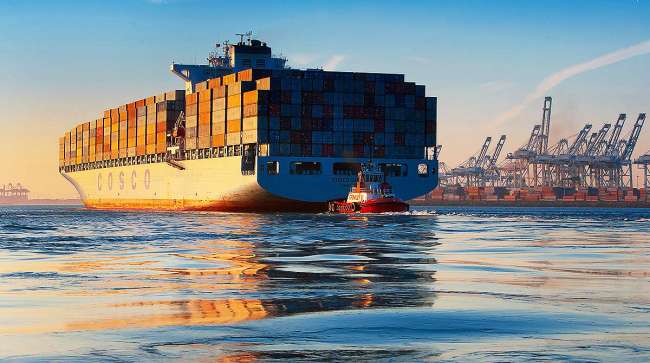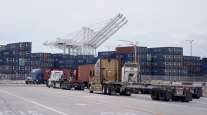Senior Reporter
Port of Long Beach Has Record 1Q; Port of Los Angeles Sees 5.7% Drop

The Port of Long Beach had its best first quarter, up 19.4% compared with the same period in 2017. The marine terminals handled nearly 1.9 million 20-foot-equivalent units, port authority officials said. The previous record was set in 2007.
March volume reached 575,258 TEUs, which also was up 13.8% compared with March 2017.
Imported and exported products showed significant increases. Dockworkers moved 267,824 imported TEUs in March, up 7.3% from a year ago, and exports jumped 18.3% to 142,419 TEUs. The large increase in imported goods meant containership operators hauled 165,015 empty TEUs back overseas to be refilled.
Port of Long Beach officials said they were encouraged by the first-quarter numbers despite the expected drop in shipping that took place during the Lunar New Year, when Asian nations usually are on vacation and workloads are reduced.
#POLB had a busy March. 575,258 TEUs moved through the Port, an increase of 13.8% compared to the same month last year. https://t.co/uRtq9IajTk — Port of Long Beach (@portoflongbeach) April 16, 2018
“Our March cargo jumped despite the shipping slowdown during the Lunar New Year holiday in China,” Port of Long Beach Executive Director Mario Cordero said. “One of the encouraging signs throughout this surge in cargo last year and this year is the operational efficiency at our marine terminals. We are handling record levels of cargo with no delays.”
While Port of Long Beach officials are pleased with the first-quarter numbers, the Port of Los Angeles facility saw a 5.7% drop in cargo compared with the year-ago period. The decrease was pronounced in March, when the port processed 577,865 TEUs, a 27% drop compared with last year.

Imports and exports saw big falls. Imports dropped 29.2% to 264,460 TEUs in March, and exports were down 16.6% to 163,706 TEUs. Empty containers also fell by 33%.
The ports of Los Angeles and Long Beach are the largest, respectively, in North America by container volume.
“We’re comparing our numbers to an extraordinary 29-period volume gain last March, so a decline is not unexpected,” Port of Los Angeles Executive Director Gene Seroka said. “Lunar New Year timing and subsequent canceled or reduced sailings played a factor. We continue to focus on our efforts to make facility and technology enhancements that position us for long-term efficiency and productivity gains.”
The March drop-off comes after the Port of Los Angeles had its busiest February in its 111-year history, processing 725,059 TEUs. In January and February, overall volumes were up 5.6% compared with 2017, which overall was the port’s best year. For the first two months of 2018, overall volume at the Port of Los Angeles was up 5.6%.




